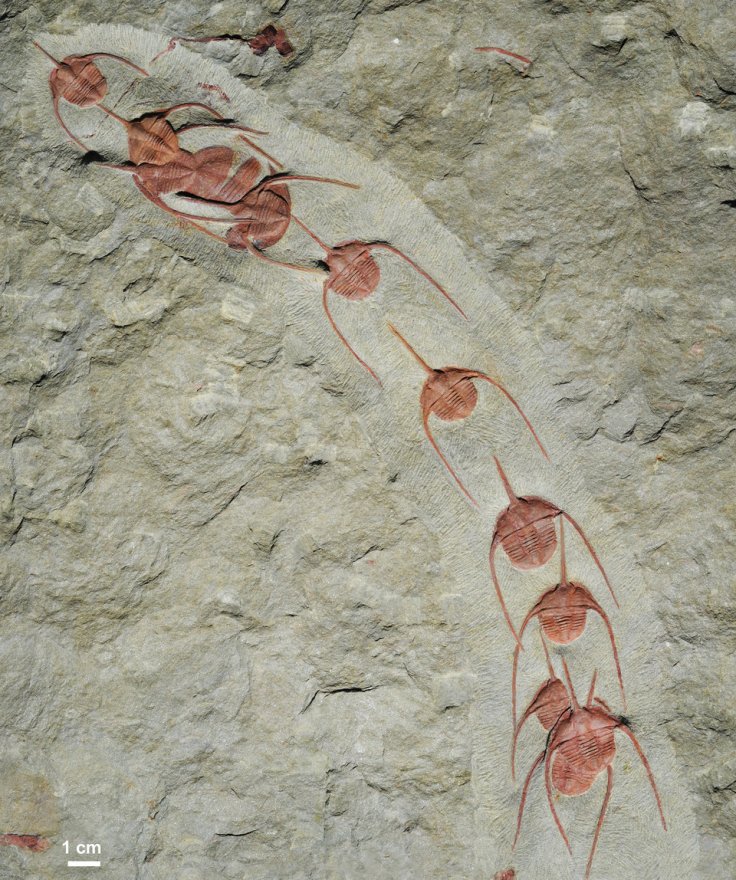
After exploring fossils of Moroccan Ampyx trilobites, scientists concluded that they lived 480 million years ago, but interestingly, they were shown to be buried in their positions – collectively oriented in the same direction. The imminent question is whether this an early indication of group behavior or whether they were the first social animals!
Scientists are aware that the Ampyx processions did show some sort of collective action that was adopted in reaction to cyclic environmental issues. The study makes one thing very clear – scientists understand a lot about early living species' anatomy, but their behavior has always been more baffling. The interesting collective behavior exhibited by the trilobites could either be a recent occurrence or a primeval one.
Trilobites, a very diverse group of extinct marine arthropods, fhey first appeared in the fossil record in the Early Cambrian (521 million years ago) and went extinct during the Permian mass extinction (250 million years ago). They were one of the early animals with over 25,000 species, filling nearly every evolutionary segment. Due to their hard exoskeleton (shell), they were left as an excellent fossil record.
In their abstract published in Nature, the scientists wrote: "Interactions and coordination between conspecific individuals have produced a remarkable variety of collective behaviors. This co-operation occurs in vertebrate and invertebrate animals and is well expressed in the group flight of birds, fish shoals and highly organized activities of social insects....This study confirms that collective behavior has a very ancient origin and probably developed throughout the Cambrian-Ordovician interval, at the same time as the first animal radiation events."
Scientists from the CNRS, the University of Poitiers, UBO, Claude Bernard Lyon 1 University, Cadi Ayyad University (Marrakech, Morocco), and the University of Lausanne (Switzerland) explored the fossilized Moroccan Ampyx trilobites that survived 480 million years ago. The researchers found that the trilobites had most probably been buried in neat rows in positions that all showed to be oriented in the same direction, like a Conga line. They all remained in touch and in close contact with each other through their long spines during stormy weather.
The scientists observed: "Such mechanical contacts appear to be essential for group cohesion and for optimal coordinated locomotion. Experimental studies have shown that the gregarious behaviour of desert locusts was linked to an increase of neurotransmitter (serotonin) driven by mechanical stimuli, visual or olfactory pathways. Knowing that Ampyx priscus was blind, we hypothesize that mechanosensory stimulation via both genal and glabellar spines, or/and chemical cues, may have been a major trigger that maintained group behaviour."
Researchers compared this collective behavior with the North American spiny lobsters. They felt that the Ampyx processions showing collective behavior has been adopted as a reaction to cyclic ecological issues such as stormy weather, or to chemical signals that are related to reproduction.
Hence, group behavior seems to be from ancient origin, which gave an evolutionary edge to the first animals. It permitted the animals to live through environmental stress and enhance their survival through reproduction.









